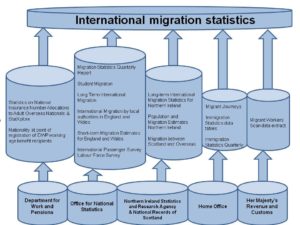Introduction
I am the Chief Statistician in the Cabinet Office. I also lead the Equality Data and Analysis Division in the Cabinet Office’s Equality Hub.
One of my roles is to improve the quality of ethnicity data across government departments.
The Standards for Ethnicity Data
In April 2023, my team in the Equality Hub published a set of Standards for Ethnicity Data.
This followed a consultation on a draft set of standards last summer. We also published an analysis of the consultation responses.
We committed to publish the standards in response to action 6 of the Inclusive Britain report — the government’s comprehensive response to the Commission on Race and Ethnic Disparities:
“To ensure more responsible and accurate reporting on race and ethnicity, the Equality Hub will, by the end of 2022, consult on new standards for government departments and other public bodies on how to record, understand and communicate ethnicity data.”
The standards describe best practice for the:
- collection of ethnicity data
- analysis of ethnicity data
- reporting of ethnicity data
Noteworthy aspects of the standards
Elsewhere I have described 5 noteworthy aspects of the standards:
- They are topic-specific data standards
- They reflect the Code of Practice for Statistics
- They also relate to the different stages of research
- The standards apply to government departments and public bodies
- We want to understand the use and impact of the standards
Important areas of data quality
I know there is much good practice in departments and other organisations that produce ethnicity data. But there are areas where the standards can have a big impact on the quality of ethnicity data. Four areas in the standards that are important are:
1. Not using the phrase ‘BAME’ (or ‘BME’) in outputs
These phrases emphasise some groups and exclude others, such as white minority groups and mixed ethnicity groups. The standards talk about the importance of using the correct language – the Equality Hub also provides advice on how to write about ethnic groups.
2. Using harmonised standards for ethnicity data as much as possible
The Government Statistical Service team in the Office for National Statistics leads cross-government work on developing and maintaining harmonised standards. Using harmonised standards helps improve the coherence and utility of public sector data. We also encourage the use of as many detailed ethnic groups as possible in outputs.
3. Understanding the level of missing ethnicity data in data collections
This is an important indicator of data quality. Some datasets have high levels of missing ethnicity. For example 19% of prison officers had unknown ethnicity in 2020. Also, the percentage of prison officers with unknown ethnicity changes every year. For example, it was 9.8% in 2015, and 30.1% in 2019. This makes it difficult to make reliable generalisations about changes over time, and has a big impact on how the data can be used and understood. Reporting on the level helps users interpret ethnicity data better.
4. Analysing and reporting on ethnicity data by controlling for other demographic factors.
The ONS has done some sophisticated work in this area. We understand that undertaking regression analysis is not always going to be possible. But users can be particularly interested in deeper analysis and clearer context of the data. Understanding the impact of factors other than ethnicity can be helpful for them. For example, could differences be due to where people in some ethnic groups live? Could they be due to differences in age structure, or an imbalance in the number of men and women in a survey sample?
This sort of contextual analysis is something the Equality Hub is starting to do for the Ethnicity facts and figures website as part of action 8 in the Inclusive Britain report.
Promoting and encouraging use
I am now at the stage of:
- promoting the standards
- encouraging their use
- thinking about how to understand their impact
This will help the Equality Hub meet our aim of ensuring more responsible reporting of ethnicity data.
I have emailed statistical Heads of Profession in government departments about the standards. I have been invited to speak to analysts in some departments, and I would like to do so in other departments.
OSR is helping us with understanding the use and impact of the standards. For example, they will:
- develop guidance for reviewing data producer compliance with these standards when they carry out assessments.
- review different data producers’ statistics in one or two years’ time to see how producers are responding to the standards.


